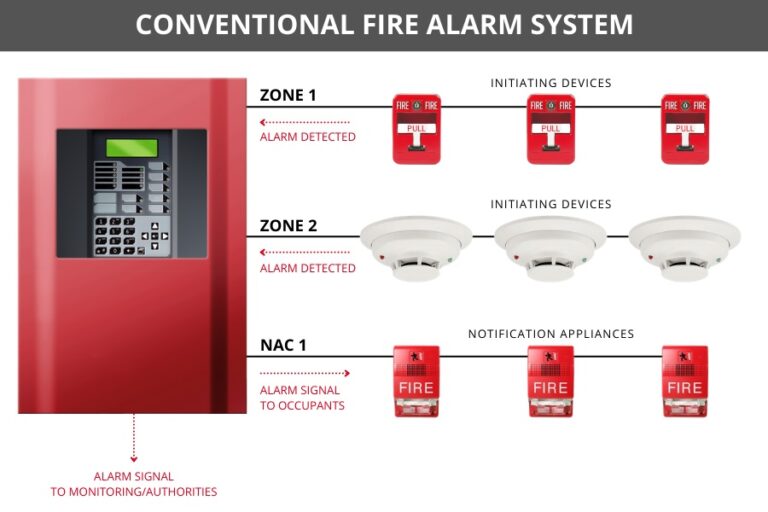Home » Systems » Fire Alarm System » Conventional Fire Alarm System

Home » Systems » Fire Alarm System » Conventional Fire Alarm System
Here’s how a Conventional Fire Alarm System typically works:
The building is divided into separate zones, each covering a specific area or floor. Detectors and call points within each zone are connected to the same circuit on the fire alarm control panel.
Fire detectors, such as smoke detectors or heat detectors, continuously monitor their respective zones for signs of fire or smoke. When smoke or heat is detected, the detector triggers the alarm by activating its circuit on the control panel.
When a detector or call point is activated, it sends a signal to the control panel, which in turn activates the corresponding alarm devices, such as sounders, bells, or strobes, to alert building occupants of the fire emergency.
In a conventional system, the control panel indicates the activated zone but does not provide specific information about the exact location of the activated detector or call point within the zone. Occupants and emergency responders must manually inspect the zone to locate the source of the alarm.
Ensure Your Security with Our State-of-the-Art Conventional Fire Alarm System Functioning
Conventional systems are typically less expensive to install and maintain compared to more advanced addressable systems.
The design and operation of conventional systems are relatively straightforward, making them easy to understand and use.
Conventional systems have been used for many years and are well-established, providing reliable fire detection and alarm functionality.
Conventional systems can only indicate the general area of a fire or fault, rather than providing specific information about the exact location of the activated device
Conventional systems may be less flexible in terms of system expansion or customization compared to addressable systems.
Conventional Fire Alarm System are a cost-effective and reliable option for smaller buildings or facilities where detailed information about the location of a fire may not be as critical
Our experienced team delivers professional installation & leading-edge security products.












Office No 1233/E World Trade, Center (DWTC) Shaikh Zayed Road Dubai.
3rd Floor, World Trade Center (Giga Mall) Islamabad Pakistan
info@msafacilities.com
sales@msafacilities.com